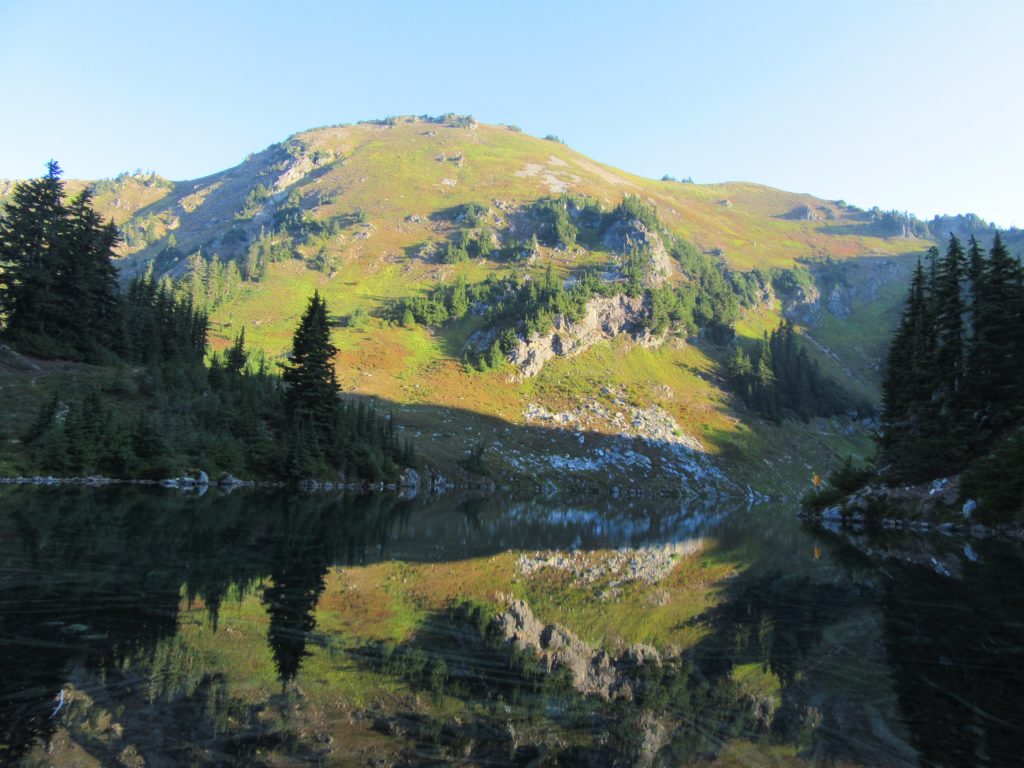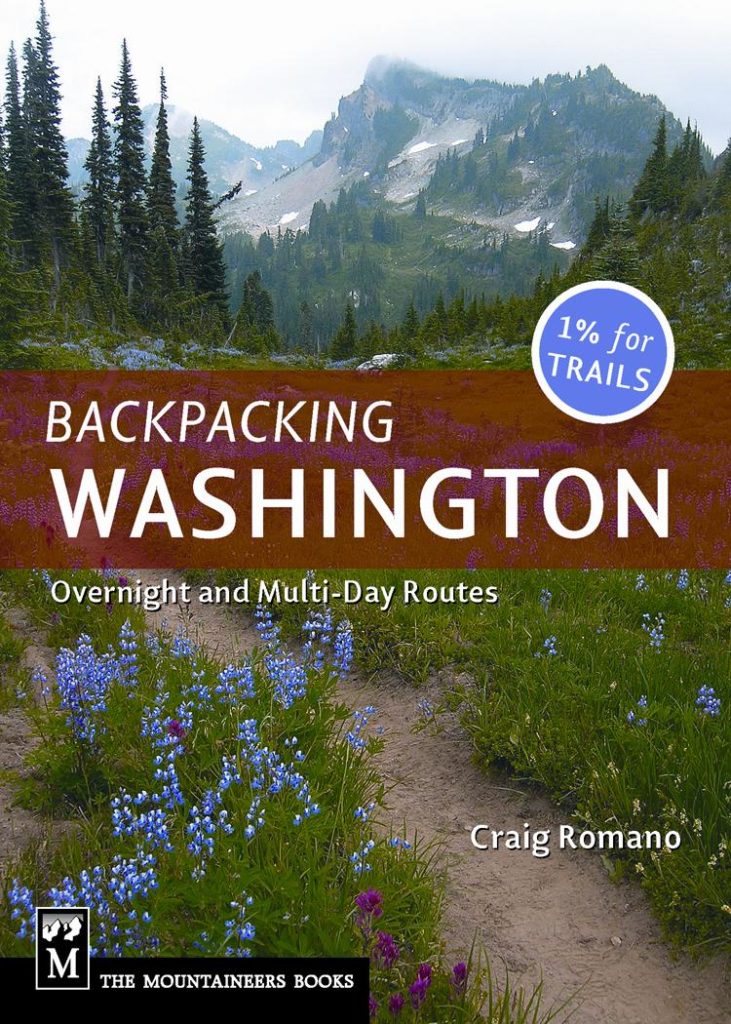Blue Lake and Johnson Mountain–divine ridge walking

and downright cold to swim in!
Quick Facts:
Location: Mountain Loop Highway near Darrington
Land Agency: Mount Baker-Snoqualmie National Forest
Roundtrip: 28.3 miles
Elevation Gain: 6,725 feet
Green Trails Maps: Mountain Loop Highway 111SX
Recommended Guidebook: Backpacking Washington (Romano; Mountaineers Books)
Access: From Darrington, head south on the Mountain Loop Highway 16.0 miles turning left onto FR 49. Follow for 6.4 miles bearing left .1 mile to North Fork Sauk Trail. Park here and walk road to Bald Eagle Trailhead.
Notes: Northwest Forest Pass required; dangerous snow fields linger late in summer; there’s a potentially tough river ford; and loop requires a 2.5 mile road walk.
Contact: Darrington Ranger District: Mount Baker -Snoqualmie National Forest
Good to Know: Backpacking, exceptional wildflowers, historic fire lookout site, dog-friendly, old-growth, Practice Leave No Trace Principles; Wilderness Rules Apply
Blue Lake sits deep in a cirque straddling the Glacier Peak and Henry M Jackson Wilderness areas. Frozen throughout most of the summer, it’s a long and rough hike to this aquatic gem. The hike described here usually requires 2 to 3 days and consists of an amazing loop utilizing two long ridges teeming with jaw-dropping views. Early in the season snowfields make this hike dangerous to near impossible to do. September is ideal.

Start by walking FR 49 south 2,5 miles to the Bald Eagle Trail. Cross Sloan Creek on a good bridge and proceed on an old road bed through old cuts. The trail then briskly climbs entering the Henry M. Jackson Wilderness and soon afterward reaching a junction at Curry Gap.
The Bald Eagle Trail turns left and begins a steep and rough climb up timbered slopes skirting a knoll and large avalanche chute. Catch window views west of the massive Monte Cristo block while negotiating the rough terrain. Skirt a steep north facing open slope below the summit of 5668-foot Bald Eagle Mountain. Often buried in hard-packed snow until mid-summer, without an ice axe, don’t attempt to cross it.
The way then follows along a high ridge descending slightly to a small gap before slowly climbing, rounding 5,697-foot Long John Mountain and coming to a good but maybe dry camp. The trail then rounds another knoll coming to another good camp with more reliable water. Then it’s up again climbing steeply to just beneath the summit of 5,946-foot June Mountain where excellent views can be had of emerald Pilot Ridge and Johnson Mountain and snowy Glacier Peak.
The way then comes to a junction in a small gap. Head left entering the Glacier Peak Wilderness; and descend across a barren boulder field coming to Little Blue Lake. Then start climbing again reaching a junction. Just to the right is Blue Lake (el. 5,600 feet) tucked in a big rocky and snowy cirque. Good camps can be found among the treed knolls surrounding the lake’s outlet. Cascades crash down the surrounding steep slopes while chunks of ice float upon the lake’s reflecting surface.
Before continuing the loop, fill water bottles as Pilot Ridge is bone dry after snow melt. Then head back to the last junction and begin a long sweeping traverse up the open slopes of Johnson Mountain. Views of the lake shimmering below are wonderful. Pass a junction with a spur path to the old fire lookout site on 6,721-foot Johnson Mountain. With commanding views of Sloan Peak and Glacier Peak, it’s a mandatory side trip on a clear day.
The main trail continues along Pilot Ridge flying high through sprawling flower-filled meadows for nearly four miles. After cresting a 5,700-foot knoll the way retreats to forest dropping steeply to a saddle. Then a good little climb follows before back down and once again up to another knoll. Then it’s a rapid knee-jarring descent through old growth timber to the North Fork Sauk River. Ford the river, difficult in high water—or look for a log crossing and reach the North Fork Sauk River Trail where your vehicle waits 2.1 miles to the left.

For detailed information on this hike, and many other outstanding multi-day backpacking destinations throughout the region and beyond; pick up a copy of my best-selling Backpacking Washington (Mountaineers Books).